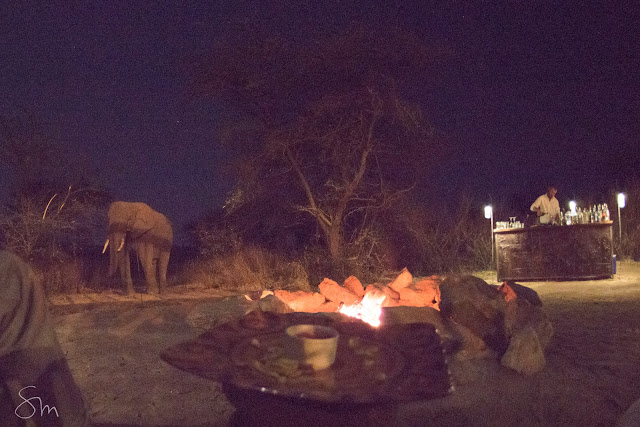We had seen a safe crossing through the Mara river of a huge herd of wildebeest and zebra with thousands of animals on our first day in the area.
Most people, however, yearn for the more gruesome pictures of the crossings, that make it into the magazines and films: of crocodiles preying on a stumbling wildebeest in the water, of broken limbs and orphaned wildebeest babies. They try to glimpse some of nature's less happy moments and wonder why they come back to camp in the evening a little subdued ... watching and hearing the real thing happening a few meters away is very different from looking at pictures in wildlife books and watching TV documentaries from the comfort of a sofa.
Suddenly, I heard a loud "Mooh!", a splashing noise, saw something fly through the air. I ran back to the car to grab my camera which I had left behind as it was getting dark already, set focus on the far side of the river bank and watched the drama unfold. Most of the action was happening under water or in a wild misty spray with occasional gruesome images popping up like in a horror movie.
The following pictures are high-ISO and a bit noisy as I needed a fast shutter-speed.
Several crocs fought about the wildebeest to tear it apart. Eating for them is an exercise in team work, as their teeth are not made for chewing but for tearing only. The bits are swallowed whole.
While tearing at the prey, crocs make a rolling motion called the "death roll" which you can see in the next pictures when their white bellies come up. They use this motion to twist off pieces because their jaws are not made for cutting and shearing.
that's the stomach.
Another dramatic spectacle with a huge massacre of dead wildebeest we found the next day a bit downstream.
Here wildebeest had tried to cross the river where the bank on the far side was too steep. They could not get back on land and many did not survive the stampede. The bodies were washed ashore where the river was shallow and they were creating a blockade, where a cloud of vultures was circling over.
A furious hippo came along trying to push his way through the dead bodies. He had not realized what had happened and that all these animals were dead. He started to threaten showing his teeth and even took one whole wildebeest carcass in his huge mouth, shoving through the carnage and making way, obviously angry that his river was thus polluted.
Out of my Way!
A few days later heavy rainfall washed the river clean and all the debris down to Lake Victoria. Which by the way provides drinking water for all surrounding countries and - with the river Nile passing through - even up as far as Egypt.
In spite of all these victims and their often quite stupid suicidal behaviour, wildebeest are a very successful animal species in numbers. Not many of their offspring are lost and their numbers in Serengeti exceed 1.3 mio animals.
Here I have produced some abstracts from panning exercides inspired by timeless cave drawings.






























































































